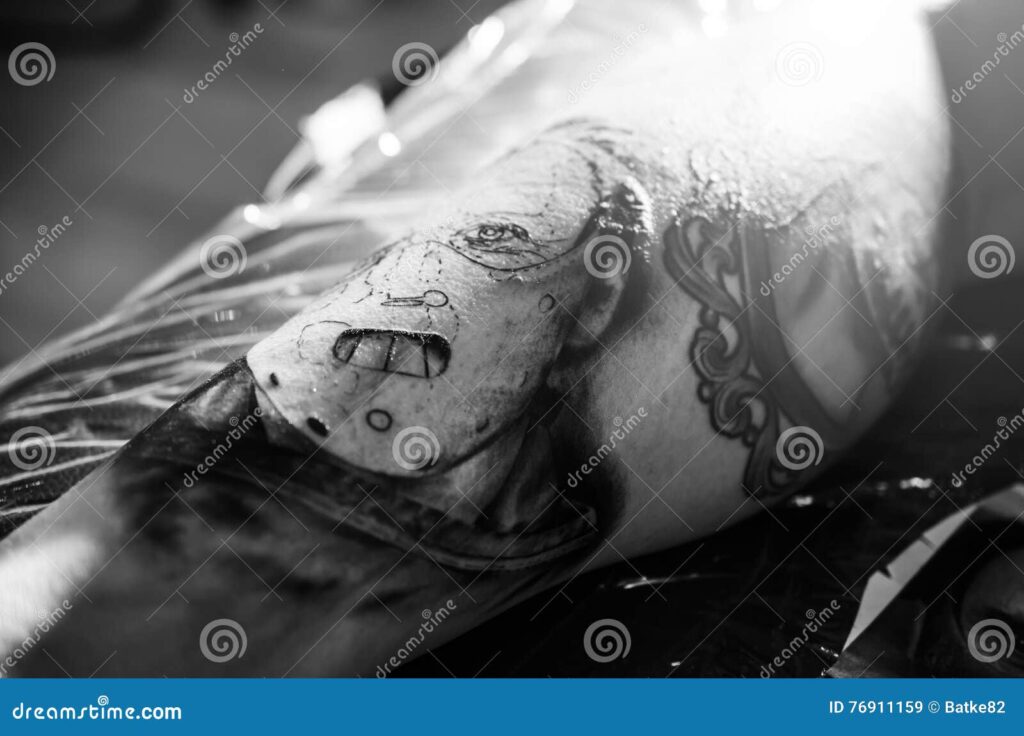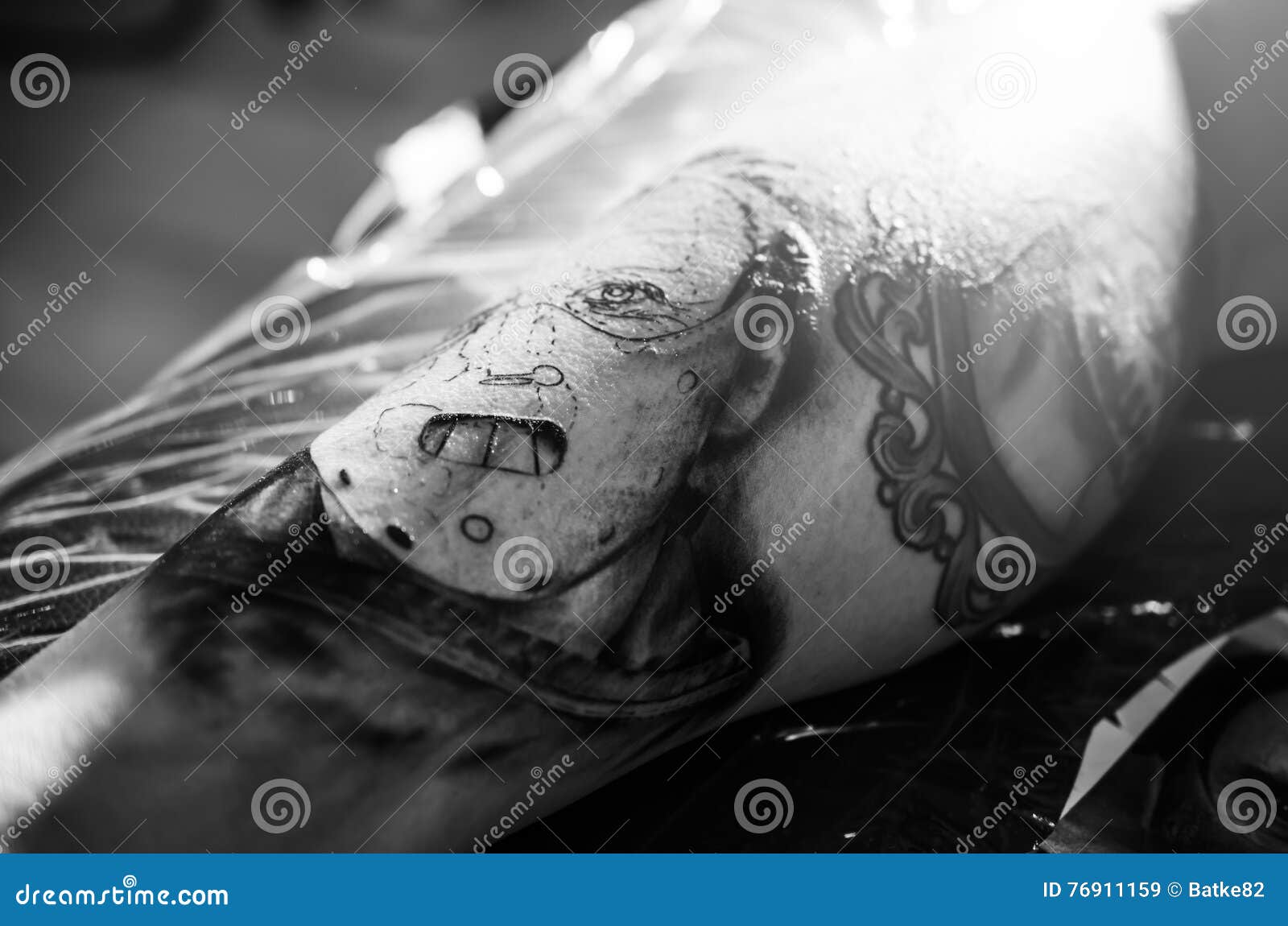
Decoding the Canvas: A Comprehensive Guide to Men’s Leg Tattoos
The world of body art is constantly evolving, with tattoos on men’s legs emerging as a powerful form of self-expression. From intricate sleeves that wrap around the entire limb to smaller, more discreet designs, leg tattoos offer a unique canvas for storytelling and artistic exploration. This comprehensive guide delves into the diverse realm of men’s leg tattoos, exploring popular designs, placement considerations, pain levels, aftercare tips, and everything else you need to know before taking the plunge.
The Allure of Leg Tattoos for Men
Why are tattoos on men’s legs gaining so much popularity? Several factors contribute to their appeal. The leg provides a substantial area for larger, more detailed designs, allowing artists to showcase their skills and create truly breathtaking pieces. The relative ease of concealing or displaying leg tattoos, depending on the occasion, adds to their versatility. Furthermore, the leg offers a unique opportunity to play with the body’s natural contours, creating dynamic and visually striking effects.
Popular Tattoo Designs for Men’s Legs
The possibilities for men’s leg tattoos are virtually limitless. Here are some of the most popular and enduring design choices:
- Sleeve Tattoos: Extending from the thigh to the ankle, leg sleeves provide ample space for complex narratives and intricate imagery. Common themes include Japanese mythology, biomechanical designs, and nature-inspired motifs.
- Tribal Tattoos: Paying homage to ancestral roots or simply appreciating the bold aesthetics, tribal tattoos remain a classic choice. Polynesian, Maori, and Celtic designs are particularly popular.
- Animal Tattoos: Lions, wolves, eagles, and dragons are frequently chosen to represent strength, courage, and wisdom. The anatomical structure of the leg allows for dynamic depictions of these powerful creatures.
- Geometric Tattoos: Clean lines, symmetrical patterns, and optical illusions characterize geometric tattoos. These designs can be both visually stunning and deeply symbolic.
- Script Tattoos: Quotes, song lyrics, and names can be elegantly incorporated into leg tattoos. Consider the font, size, and placement carefully to ensure readability and visual appeal.
Placement Considerations for Leg Tattoos
Choosing the right placement is crucial for achieving the desired aesthetic and minimizing discomfort. Here are some key areas to consider:
- Thigh Tattoos: The thigh offers a relatively large and flat surface, making it ideal for larger, more detailed designs. The outer thigh is generally less sensitive than the inner thigh.
- Calf Tattoos: Calf muscles provide a natural canvas for dynamic designs. The curvature of the calf can enhance the visual impact of the tattoo.
- Ankle Tattoos: Ankle tattoos are generally smaller and more discreet. They can be a great option for first-timers or those seeking a subtle statement.
- Shin Tattoos: The shinbone is notoriously sensitive, so be prepared for a higher level of pain. However, the flat surface allows for clean lines and intricate details.
The Pain Factor: What to Expect
Pain tolerance varies greatly from person to person, but some areas of the leg are generally more sensitive than others. As mentioned earlier, the shinbone is considered one of the most painful areas to get tattooed. The inner thigh and ankle can also be quite sensitive due to the presence of nerve endings and thinner skin. The outer thigh and calf tend to be less painful.
Factors that can influence the pain level include the size and complexity of the design, the artist’s technique, and your overall health and well-being. Getting enough sleep, staying hydrated, and avoiding alcohol and caffeine before your appointment can help minimize discomfort.
Preparing for Your Leg Tattoo Appointment
Proper preparation is essential for a smooth and successful tattoo experience. Here are some tips to follow:
- Research and Choose an Artist: Look for an artist who specializes in the style of tattoo you want and has a strong portfolio of leg tattoos. Read reviews and ask for recommendations.
- Consult with Your Artist: Discuss your design ideas, placement preferences, and any concerns you may have. The artist can provide valuable feedback and help you refine your vision.
- Prepare Your Skin: Moisturize your leg regularly in the weeks leading up to your appointment. Exfoliate gently a day or two before to remove dead skin cells.
- Dress Comfortably: Wear loose-fitting clothing that allows easy access to the area being tattooed.
- Stay Hydrated and Eat Well: Drink plenty of water and eat a nutritious meal before your appointment to maintain your energy levels.
Aftercare: Protecting Your Investment
Proper aftercare is crucial for ensuring that your leg tattoo heals properly and looks its best for years to come. Follow your artist’s instructions carefully, as they may vary depending on the specific tattoo and your skin type. Here are some general guidelines:
- Keep the Tattoo Clean: Gently wash the tattooed area with mild soap and water two to three times a day. Avoid harsh soaps, scented lotions, and excessive scrubbing.
- Apply a Thin Layer of Ointment: Use a fragrance-free, hypoallergenic ointment to keep the tattoo moisturized and protected. Apply a thin layer after each washing.
- Avoid Sun Exposure: Sunlight can fade and damage tattoos. Protect your tattoo by covering it with clothing or applying a broad-spectrum sunscreen with an SPF of 30 or higher.
- Don’t Pick or Scratch: Itching is a normal part of the healing process, but avoid picking or scratching the tattoo. This can lead to infection and scarring.
- Stay Hydrated: Drinking plenty of water helps your skin heal from the inside out.
Common Mistakes to Avoid
Even with the best intentions, mistakes can happen. Here are some common pitfalls to avoid:
- Choosing an Inexperienced Artist: A skilled artist is essential for achieving a high-quality tattoo. Don’t compromise on quality for the sake of price.
- Ignoring Aftercare Instructions: Proper aftercare is just as important as the tattooing process itself. Follow your artist’s instructions diligently.
- Sun Exposure: Sun damage is one of the biggest threats to tattoo longevity. Protect your tattoo from the sun at all costs.
- Picking or Scratching: Resist the urge to pick or scratch your tattoo, even if it’s itchy.
- Using Harsh Products: Avoid using harsh soaps, scented lotions, and other products that can irritate the skin.
The Future of Men’s Leg Tattoos
The trend of tattoos on men’s legs shows no signs of slowing down. As tattooing becomes more mainstream and socially accepted, we can expect to see even more innovative and creative designs emerging. Advancements in tattooing technology and techniques will also contribute to the evolution of this art form.
Whether you’re a seasoned tattoo enthusiast or a first-timer, exploring the world of men’s leg tattoos can be a rewarding and transformative experience. By carefully considering your design, placement, and aftercare options, you can create a piece of art that reflects your personality and tells your unique story. [See also: Best Tattoo Aftercare Products] [See also: Choosing the Right Tattoo Artist]
Conclusion
Men’s leg tattoos are a powerful form of self-expression, offering a unique canvas for storytelling and artistic exploration. From intricate sleeves to smaller, more discreet designs, leg tattoos allow men to showcase their individuality and make a statement. By understanding the design options, placement considerations, pain levels, and aftercare requirements, you can embark on your tattoo journey with confidence and create a piece of art that you’ll cherish for a lifetime. The key to a successful leg tattoo lies in careful planning, choosing a skilled artist, and diligently following aftercare instructions. With the right approach, your tattoo on your leg can become a meaningful and beautiful addition to your personal narrative.

